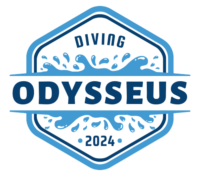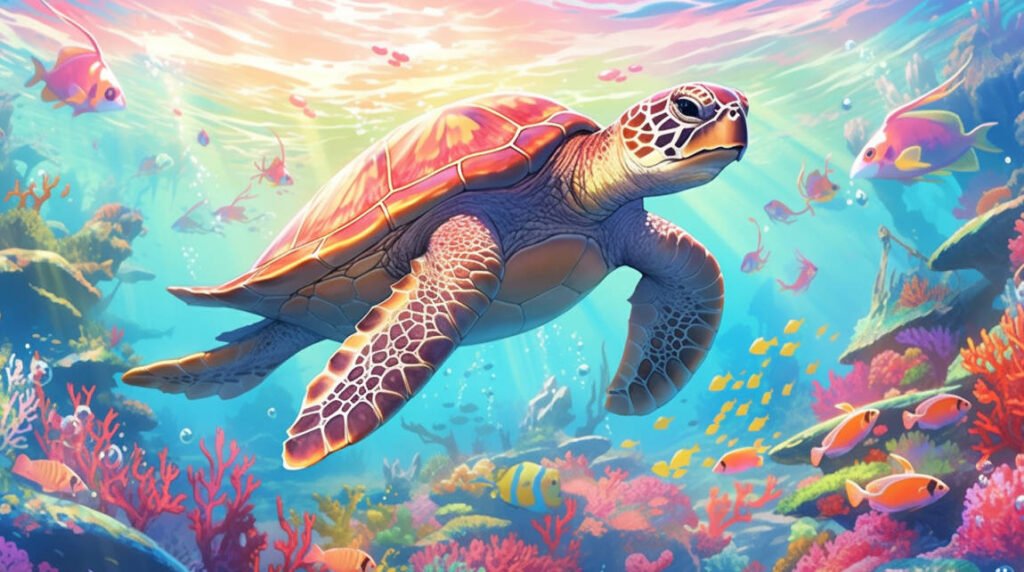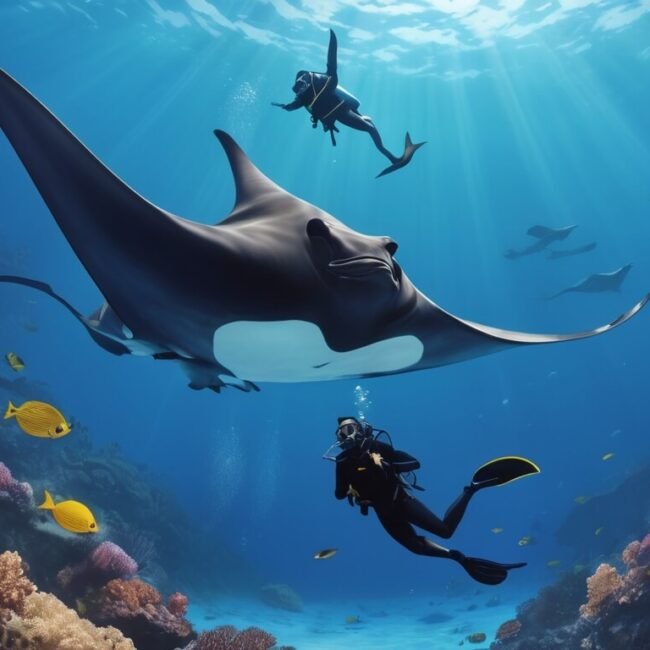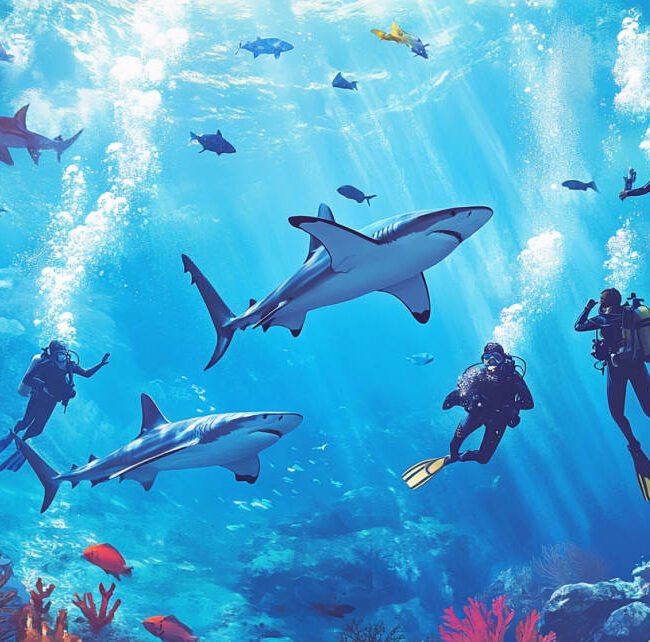Have you ever gazed out at the ocean and wondered what mysteries lie beneath? As a diver who’s plunged into the depths countless times, I can tell you—it’s a whole new world down there! ???? Oceans cover over 70% of our planet, yet we’ve explored less than 5% of them. Join me on an underwater journey to understand marine ecosystems from a diver’s perspective. We’ll explore vibrant coral reefs, mysterious deep-sea trenches, and everything in between. Let’s dive in!
The Diversity of Marine Ecosystems
Coral Reefs: Explore the Colorful and Biodiverse Habitats Teeming with Life
Oh, coral reefs! They’re like the rainforests of the sea—bursting with colors and teeming with life. I remember my first trip to the Great Barrier Reef. I was absolutely blown away by the sheer variety of fish and the vibrant corals. It’s easy to get lost in the beauty, but coral reefs are so much more than just pretty to look at.
Coral reefs support about 25% of all marine life, despite covering less than 1% of the ocean floor. That’s insane! These ecosystems provide shelter, food, and breeding grounds for countless species. Plus, they protect our coastlines from storms and erosion. But here’s the kicker: coral reefs are incredibly sensitive. A slight change in water temperature can cause coral bleaching, which can devastate these habitats.
Pro Tip: If you ever go snorkeling or diving, remember to keep your distance from the corals. Touching them can cause damage and contribute to bleaching. Trust me, the reefs will thank you!
READ MORE: Coral Reef Protection: How to Safeguard Our Oceans
Kelp Forests: Discover These Underwater Jungles and Their Role in Marine Life
Kelp forests are another amazing marine ecosystem. Think of them as the ocean’s version of a lush, green forest. I once kayaked through a kelp forest, and it felt like paddling through an underwater jungle. The tall kelp blades sway with the currents, creating a mesmerizing dance.
These forests are crucial because they provide habitat and food for a wide range of species, from tiny invertebrates to large predators like sea otters. Kelp also plays a role in carbon sequestration, helping to absorb carbon dioxide from the atmosphere. It’s like nature’s own air purifier!
Pro Tip: If you’re exploring kelp forests, wear protective gloves. The kelp can get tangled in your gear, and you don’t want to accidentally harm any of the creatures living there.
Open Ocean (Pelagic Zone): Understand the Vastness and the Species That Inhabit It
The open ocean, or pelagic zone, is where things get really wild. Imagine an endless blue expanse, home to some of the most incredible creatures like sharks, whales, and the elusive giant squid. I’ve always been fascinated by the sheer scale of the open ocean. It’s both beautiful and intimidating.
This zone is divided into different layers, each with its own unique ecosystem. From the sunlit surface to the dark, mysterious depths, each layer supports different life forms. For example, plankton in the upper layers are the foundation of the marine food web, supporting everything from tiny fish to massive whales.
Pro Tip: When exploring the open ocean, always respect the wildlife. Maintain a safe distance from large animals like whales and sharks to avoid disturbing them.
Deep-Sea Ecosystems: Uncover the Secrets of the Ocean’s Deepest Parts
Deep-sea ecosystems are like the final frontier of our planet. I remember reading about hydrothermal vents and being amazed by the bizarre creatures that thrive in such extreme conditions. These ecosystems exist in the dark, high-pressure depths of the ocean, where sunlight never reaches.
Life here is nothing short of miraculous. From tube worms to giant clams, these organisms have adapted to survive without sunlight, relying instead on chemosynthesis. It’s incredible to think about how life can flourish in such harsh environments.
Pro Tip: Deep-sea exploration is challenging, but supporting organizations that fund deep-sea research can help us uncover more about these mysterious ecosystems.
Estuaries and Mangroves: Learn About These Crucial Transitional Zones Between Land and Sea
Estuaries and mangroves are vital for both marine and terrestrial life. I spent a summer volunteering in a mangrove restoration project, and it was eye-opening to see how these areas serve as nurseries for many marine species. Estuaries are where rivers meet the sea, creating brackish water that’s rich in nutrients.
Mangroves, with their intricate root systems, protect coastlines from erosion and provide habitat for a diverse array of wildlife. They act as natural filters, trapping pollutants and improving water quality. Plus, they’re great for carbon storage, helping to mitigate climate change.
Pro Tip: When visiting estuaries or mangroves, stick to designated paths to protect these sensitive areas. Your small effort can make a big difference in preserving these ecosystems.
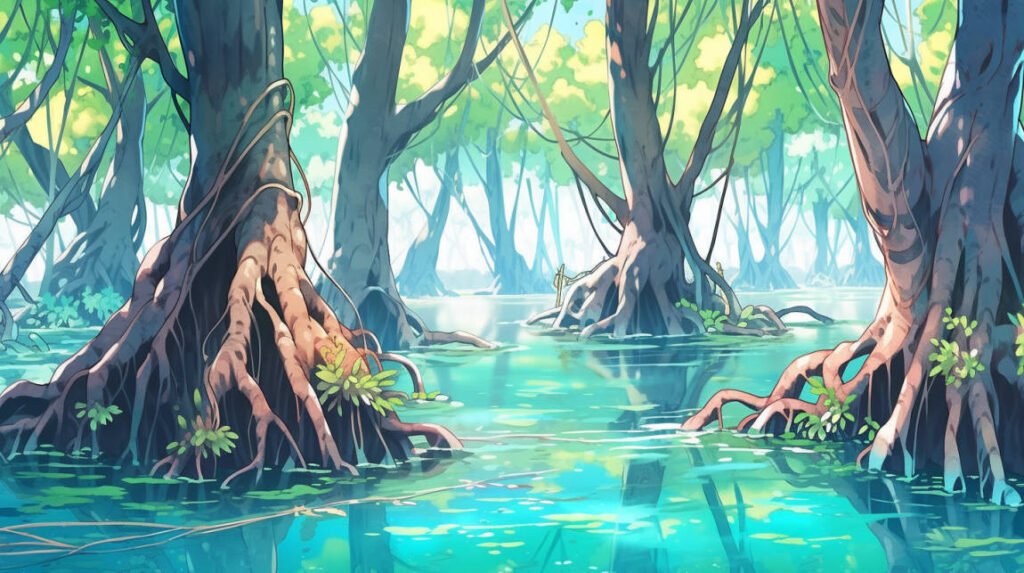
The Role of Marine Life in Global Ecosystems
Oxygen Production: How Phytoplankton Contribute to the Air We Breathe
You might not think about it, but marine ecosystems are major oxygen factories. Phytoplankton, those tiny marine plants, produce about 50% of the world’s oxygen. I was shocked to learn that something so small has such a huge impact on our planet’s atmosphere.
These microscopic organisms float near the ocean’s surface, harnessing sunlight to perform photosynthesis. In doing so, they release oxygen and form the base of the marine food web. Without phytoplankton, life as we know it would be impossible.
Pro Tip: Reducing carbon emissions helps protect phytoplankton populations. Planting trees and supporting clean energy initiatives are great ways to contribute.
Carbon Sequestration: The Ocean’s Role in Absorbing CO2
The ocean is like a giant carbon sink, absorbing about 30% of the carbon dioxide we emit. I remember reading about how kelp forests and mangroves play a significant role in this process. By capturing and storing carbon, marine ecosystems help mitigate the effects of climate change.
However, this balance is delicate. Increased CO2 levels lead to ocean acidification, which can harm shell-forming organisms like corals and certain plankton. It’s a double-edged sword that underscores the importance of protecting our oceans.
Pro Tip: Support sustainable practices that reduce carbon footprints, such as using less plastic and conserving energy at home.
Food Chains and Webs: The Interconnectedness of Marine Species
Marine ecosystems are a complex web of life, where every species plays a role. I once got tangled up in understanding the food chain, but breaking it down helped me appreciate the interconnectedness. From tiny plankton to top predators like sharks, each organism relies on others for survival.
Disruptions to one part of the food web can have ripple effects throughout the ecosystem. For example, overfishing can reduce predator numbers, leading to an overabundance of smaller fish and plankton, which can alter the entire marine environment.
Pro Tip: Support sustainable seafood choices to help maintain balanced marine food webs. Look for certifications like MSC to ensure your seafood is sourced responsibly.
Climate Regulation: Oceans as Climate Buffers
Oceans play a crucial role in regulating the Earth’s climate. They absorb and store vast amounts of heat, helping to stabilize global temperatures. I’ve always found it fascinating how something as vast as the ocean can influence weather patterns and climate on a global scale.
Additionally, marine ecosystems like coral reefs and mangroves act as buffers against extreme weather events, protecting coastal communities from storms and sea-level rise. Preserving these ecosystems is essential for maintaining their climate-regulating functions.
Pro Tip: Reduce your carbon footprint by adopting energy-efficient habits and supporting policies that aim to protect and restore marine ecosystems.
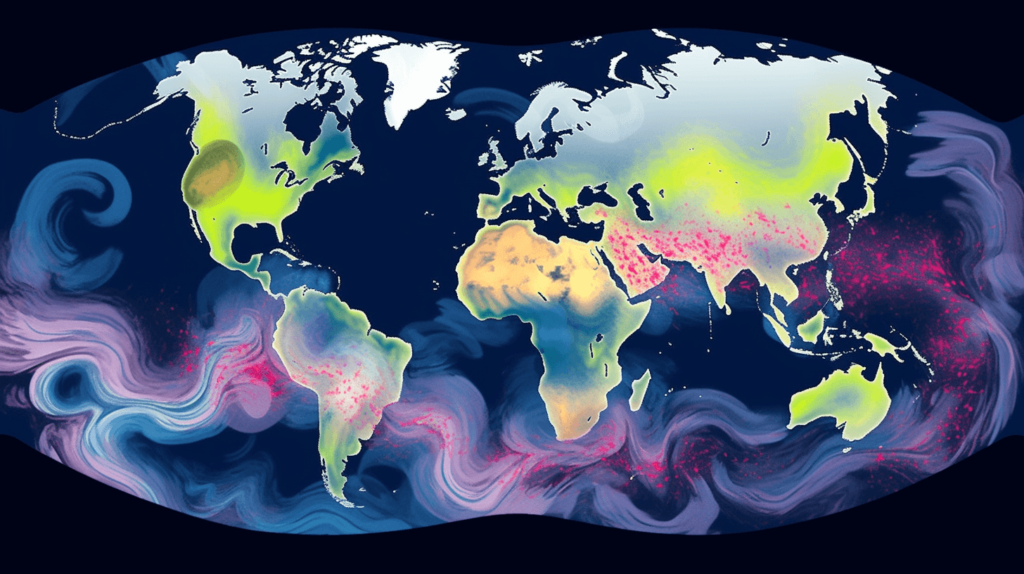
Human Impact on Marine Environments
Overfishing: The Consequences of Depleting Fish Populations
Overfishing is a huge problem that I’ve seen firsthand through documentaries and research. It’s heartbreaking to think about how entire fish populations are being wiped out. When fish stocks decline, it affects not just the marine life but also the communities that rely on fishing for their livelihoods.
Unsustainable fishing practices, like using large nets or fishing during spawning seasons, can devastate fish populations. It’s a delicate balance, and unfortunately, it’s often tipped in favor of short-term gains over long-term sustainability.
Pro Tip: Choose sustainably sourced seafood and support fisheries that follow responsible practices. Certifications like MSC can guide you in making better choices.
Pollution: Effects of Plastics, Oil Spills, and Chemicals
Marine pollution is something that frustrates me to no end. Every time I see news about oil spills or plastic waste harming marine life, it hits me hard. Plastics can take hundreds of years to decompose and often end up in the stomachs of sea creatures, causing immense suffering.
Oil spills coat marine animals and habitats, leading to long-term environmental damage. Chemicals and pollutants from industries and agriculture also make their way into the ocean, disrupting ecosystems and harming both wildlife and humans.
Pro Tip: Reduce your use of single-use plastics and participate in local clean-up events. Every small action counts in the fight against marine pollution.
Climate Change: Ocean Acidification and Warming Waters
Climate change is wreaking havoc on marine ecosystems, and it’s something that’s hard to ignore. Rising temperatures lead to coral bleaching and disrupt the breeding patterns of many marine species. I remember reading about how warming waters have shifted the distribution of fish populations, affecting fisheries worldwide.
Ocean acidification, caused by increased CO2 levels, weakens the shells of mollusks and corals, making it harder for them to survive. These changes not only impact marine life but also the human communities that depend on healthy oceans.
Pro Tip: Advocate for policies that reduce greenhouse gas emissions and support renewable energy initiatives to help combat climate change.
Habitat Destruction: The Loss of Crucial Marine Habitats
Habitat destruction is another major threat to marine ecosystems. Destructive fishing practices, coastal development, and pollution all contribute to the loss of essential habitats like coral reefs, mangroves, and seagrass beds. I’ve seen beautiful coastal areas suffer from unchecked development, and it’s heartbreaking.
These habitats are crucial for the survival of many marine species. Losing them means losing the biodiversity that keeps marine ecosystems healthy and resilient. It’s a vicious cycle that needs urgent attention.
Pro Tip: Support conservation organizations that work to protect and restore marine habitats. Your donations and volunteer efforts can make a real difference.
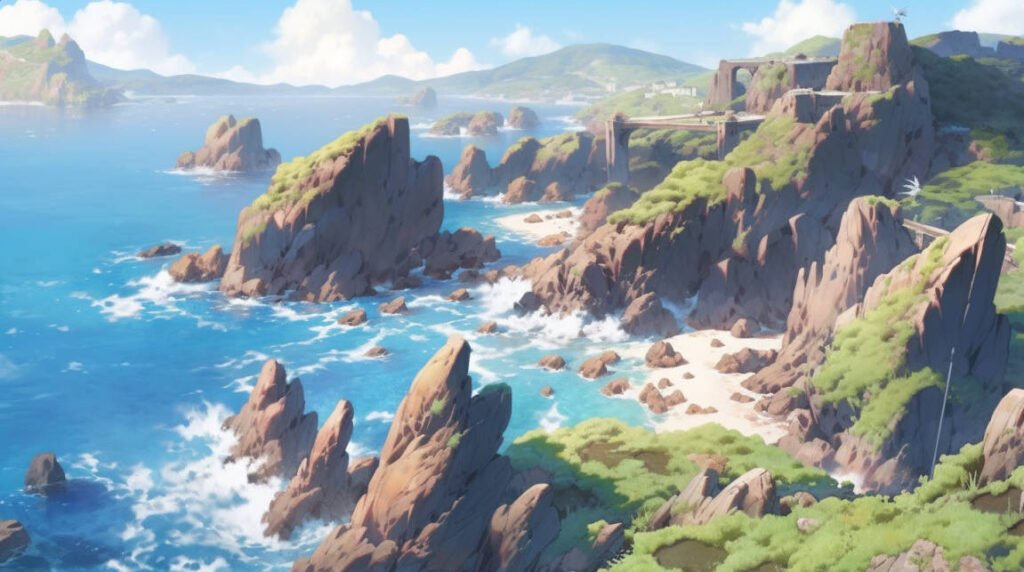
Conservation Efforts and Sustainable Practices
Marine Protected Areas (MPAs): How They Preserve Biodiversity
Marine Protected Areas (MPAs) are like sanctuaries for marine life, and I’m a big fan of them. These zones restrict human activities to various degrees, allowing ecosystems to thrive without interference. I visited an MPA once, and the difference in biodiversity was astounding compared to non-protected areas.
MPAs help preserve critical habitats, replenish fish stocks, and maintain the overall health of marine ecosystems. They also provide opportunities for research and education, fostering a deeper understanding of the ocean’s intricate systems.
Pro Tip: Support MPAs by advocating for their expansion and respecting the rules when you visit. Sustainable tourism can play a big role in their success.
Sustainable Fishing: Practices That Help Maintain Fish Populations
Sustainable fishing is all about balancing human needs with the health of marine ecosystems. I’ve learned that practices like selective fishing, avoiding overfished species, and using eco-friendly gear can make a huge difference. It’s about fishing smarter, not harder.
By following sustainable fishing guidelines, we can ensure that fish populations remain healthy and resilient. This not only benefits the marine environment but also supports the fishing communities that rely on these resources for their livelihoods.
Pro Tip: Look for sustainably sourced seafood labels and support fisheries that prioritize conservation. Your choices as a consumer can drive positive change.
Eco-Friendly Diving: Tips for Minimizing Your Impact Underwater
Diving is one of my favorite ways to connect with marine ecosystems, but it’s important to do it responsibly. Eco-friendly diving means being mindful of your actions to minimize your impact on the underwater environment. I remember accidentally kicking some coral once—lesson learned!
Simple practices like not touching or stepping on corals, avoiding contact with marine life, and using reef-safe sunscreen can make a big difference. It’s all about enjoying the beauty of the ocean while preserving it for future generations.
Pro Tip: Take a responsible diving course that emphasizes conservation and learn the best practices for minimizing your environmental footprint underwater.
Restoration Projects: Efforts to Rebuild Coral Reefs and Habitats
Restoration projects are a beacon of hope for damaged marine ecosystems. I’ve followed several initiatives aimed at rebuilding coral reefs, and it’s inspiring to see the progress being made. These projects involve techniques like coral gardening, where healthy corals are grown and transplanted to damaged areas.
Habitat restoration isn’t just about planting corals; it also includes restoring mangroves, seagrass beds, and other critical habitats. These efforts help revive biodiversity, enhance resilience against climate change, and support local communities.
Pro Tip: Get involved with local restoration projects or support organizations that fund these important initiatives. Every bit helps in the fight to restore our oceans.

The Diver’s Role in Understanding Marine Ecosystems
Citizen Science: How Divers Contribute to Marine Research
Divers have a unique opportunity to contribute to marine research through citizen science. I’ve participated in several underwater surveys, and it’s incredible how much data can be collected with just a few people exploring the reefs. Divers can help monitor fish populations, coral health, and even track the spread of invasive species.
By sharing observations and data, divers play a crucial role in scientific studies that inform conservation efforts. It’s a win-win situation where you get to enjoy the ocean while helping to protect it.
Pro Tip: Join citizen science programs or local marine research projects. Your contributions can provide valuable insights that drive meaningful change.
Observation Skills: Recording and Reporting Unusual Sightings
Having sharp observation skills is key for divers who want to contribute to marine ecosystems understanding. I remember spotting a rare sea turtle during a dive and reporting it to a local marine group. These unusual sightings can help track the movement and health of various species.
Keeping a dive log with detailed notes and photographs can be incredibly useful for researchers. It’s all about being attentive and proactive in sharing what you see underwater.
Pro Tip: Invest in a good underwater camera and take detailed notes during your dives. Accurate records can make a big difference in marine research.
Education and Advocacy: Sharing Knowledge to Raise Awareness
Educating others and advocating for marine conservation are powerful ways to make an impact. I often share my diving experiences and the beauty of marine ecosystems with friends and family, hoping to inspire them to care about the ocean too. Knowledge is power, and the more people understand the importance of marine ecosystems, the more support there will be for conservation efforts.
Whether it’s through social media, community events, or simply conversations, spreading the word can lead to greater awareness and action.
Pro Tip: Start a blog, join marine conservation groups, or speak at local events to share your passion and knowledge about marine ecosystems.
Responsible Tourism: Supporting Sustainable Businesses
Responsible tourism is essential for preserving marine ecosystems. When I travel, I make sure to choose eco-friendly accommodations and tour operators that prioritize sustainability. Supporting businesses that follow sustainable practices helps ensure that marine environments are protected and respected.
From choosing reef-safe sunscreens to participating in guided eco-tours, every decision you make as a traveler can have a positive impact on the ocean.
Pro Tip: Research and select tour operators that are certified for sustainable practices. Your choices can help promote and sustain responsible tourism in marine areas.
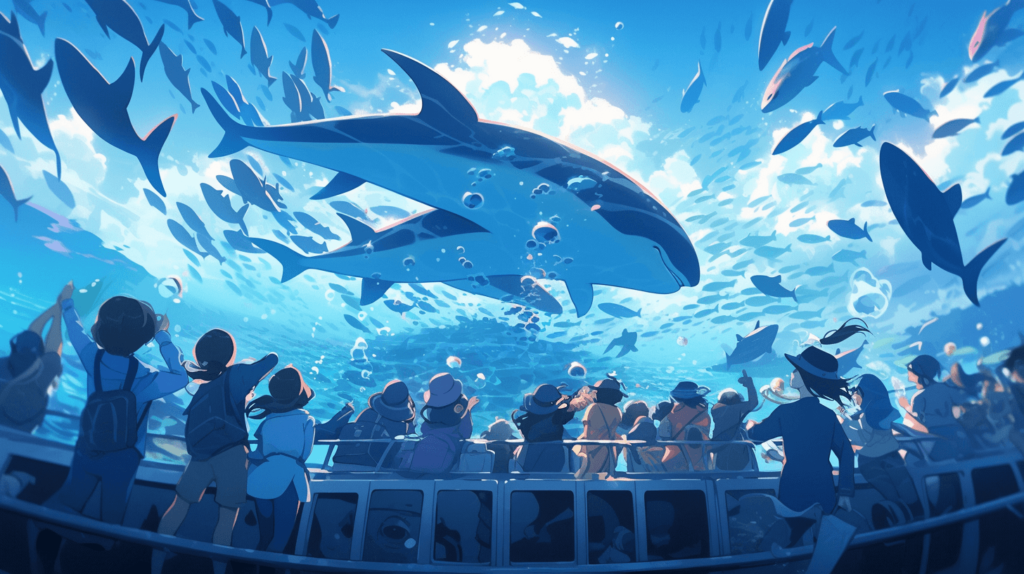
The Future of Marine Ecosystems in 2025 and Beyond
Technological Advances: Innovations in Marine Exploration
The future of marine ecosystems looks promising, thanks to technological advances. I’m excited about the innovations in marine exploration, like autonomous underwater vehicles and advanced imaging techniques. These tools allow scientists to explore deeper and more remote parts of the ocean than ever before.
Technology also helps in monitoring marine health, tracking species, and even restoring damaged habitats. It’s amazing to see how these advancements can lead to better understanding and preservation of marine ecosystems.
Pro Tip: Stay updated on the latest marine technology developments and support initiatives that use technology for conservation. It’s a game-changer for our oceans!
Global Initiatives: International Efforts to Protect Oceans
Global initiatives are crucial for the protection of marine ecosystems, and I’m heartened by the collaborative efforts taking place worldwide. Agreements like the Paris Agreement include provisions for ocean conservation, and organizations like the United Nations are pushing for sustainable ocean practices.
International cooperation ensures that marine conservation efforts are unified and effective. It’s all about working together to tackle issues like overfishing, pollution, and climate change on a global scale.
Pro Tip: Support and advocate for international marine conservation initiatives. Your voice can help amplify these global efforts to protect our oceans.
Personal Action Steps: What You Can Do to Make a Difference
Everyone can play a part in protecting marine ecosystems, and I’ve found that even small actions can add up. Whether it’s reducing plastic use, supporting sustainable seafood, or volunteering for local clean-ups, there are countless ways to contribute. I started by cutting down on single-use plastics, and it made me feel like I was making a tangible difference.
Being mindful of your actions and making environmentally friendly choices can help preserve marine ecosystems for future generations. It’s all about taking responsibility and doing what you can, where you are.
Pro Tip: Set achievable goals for yourself, like eliminating plastic straws or joining a local environmental group. Every positive change counts!
Hope for the Oceans: Success Stories and Positive Trends
Despite the challenges, there’s plenty of hope for our oceans. I’ve been inspired by numerous success stories where marine ecosystems have rebounded thanks to dedicated conservation efforts. For instance, certain fish populations have recovered in areas where overfishing was curtailed, and coral restoration projects have shown promising results.
Positive trends, like increasing global awareness and stronger environmental policies, give me confidence that we can turn things around. It’s a collective effort, and every success, big or small, is a step in the right direction.
Pro Tip: Celebrate and share success stories to inspire others. Highlighting positive outcomes can motivate more people to get involved in marine conservation.
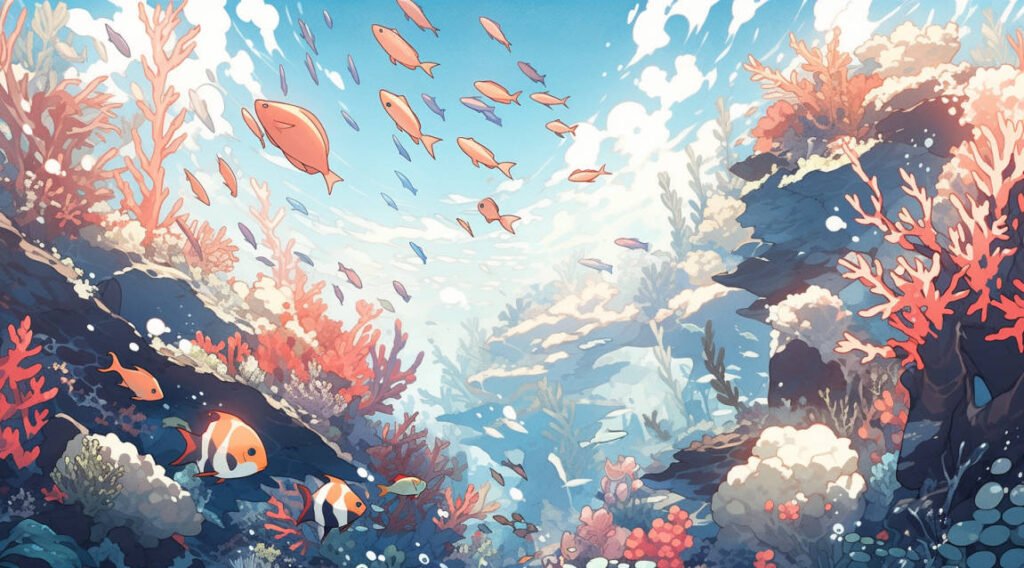
Conclusion
The ocean is a vast, mesmerizing world full of wonders we’ve only just begun to understand. As divers and ocean enthusiasts, we have a front-row seat to its beauty—and its challenges. It’s up to us to protect these incredible ecosystems for future generations. So let’s take action, spread the word, and keep exploring! After all, the ocean’s depths are calling—are you ready to answer?
